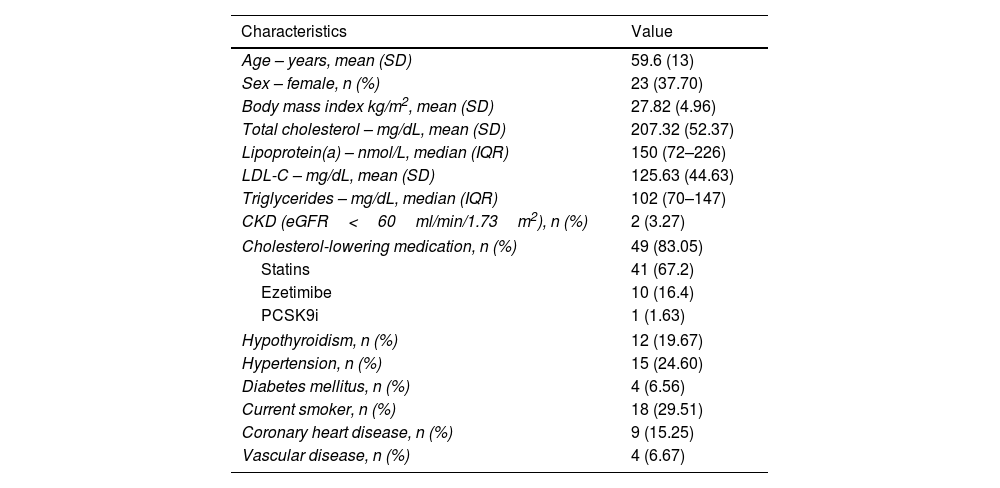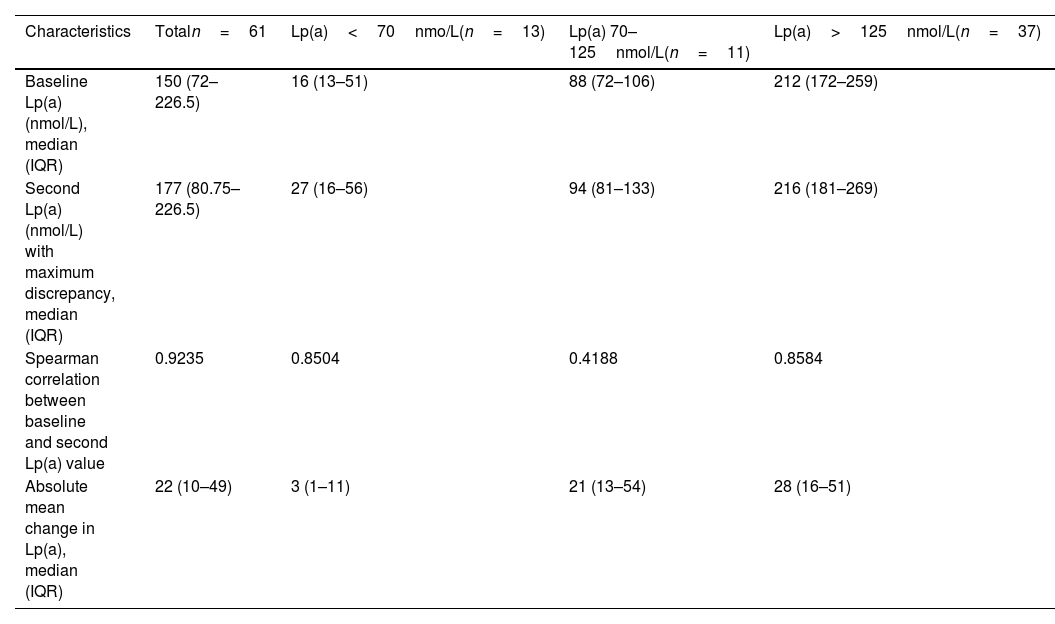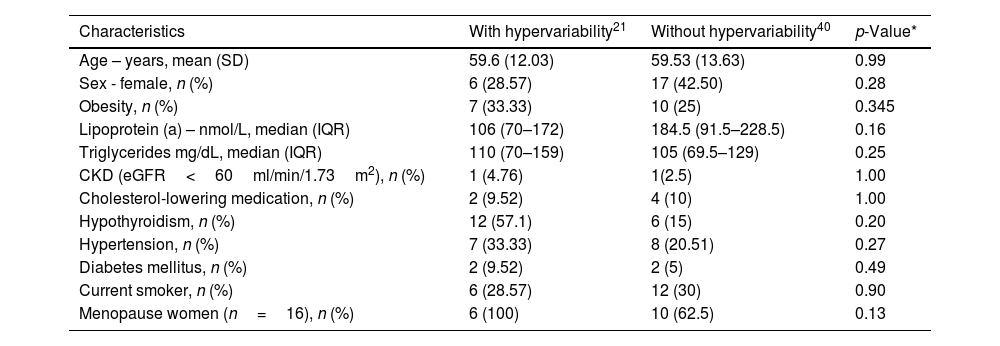Lipoprotein(a) [Lp(a)] is a significant risk factor for cardiovascular disease, yet it is often overlooked in routine clinical assessments. As a primarily genetically determined risk factor, the traditional recommendation is to assess its level once in a lifetime, as the variability of Lp(a) over time is considered to be minimal. This study aims to evaluate the potential variability of Lp(a) in clinically stable patients and investigate factors contributing to the lack of stable levels.
MethodsA retrospective analysis was conducted on a sample of adult patients attending a lipid clinic. Participants with at least two Lp(a) measurements taken with a minimum interval of four months were included. Lp(a) measurements were performed using the immunoturbidimetric assay. Variability in Lp(a) values was calculated as a percentage change from baseline, with participants exceeding a 25% change classified as having hypervariable Lp(a) levels. Additional clinical and biochemical variables were assessed.
Results61 participants with 171 Lp(a) determinations were included. Thirty-four percent exhibited a variability of 25% or higher (hypervariable). Men showed slightly greater variability than women. Changes in Lp(a) categories were observed among hypervariable patients, with some participants experiencing an increase while others showed a decrease. Menopause was present in all the women with hypervariable levels.
ConclusionOur study suggests reconsidering the reliance on a single Lp(a) measurement for assessing cardiovascular risk. Repeat measurements, particularly in borderline cases, may be beneficial.
La lipoproteína(a) [Lp(a)] es un factor de riesgo cardiovascular cuyo valor se considera estable a lo largo del tiempo debido a que su concentración está determinada, principalmente en forma genética. Este estudio tuvo como objetivo investigar si existe variabilidad a lo largo el tiempo en pacientes clínicamente estables y analizar los factores que contribuyen a su variabilidad.
MétodosAnálisis retrospectivo en una muestra de 61 pacientes adultos de la misma etnia que asistieron a una Clínica de Lípidos. Se incluyeron participantes con al menos dos mediciones de Lp(a) tomadas con un intervalo mínimo de cuatro meses. La Lp(a) se analizó con ensayo inmunoturbidimétrico, en un mismo laboratorio. La variabilidad en los valores de Lp(a) se calculó como un cambio porcentual desde el valor inicial, clasificando a los participantes que excedieron un cambio del 25% como hipervariables. También se evaluaron variables clínicas y bioquímicas adicionales.
ResultadosSe incluyeron 61 participantes con 171 determinaciones de Lp(a). El 34% mostró una variabilidad del 25% o mayor. Los hombres mostraron una variabilidad ligeramente mayor que las mujeres. Se observaron cambios en las categorías de Lp(a) entre los hipervariables, algunos participantes experimentaron un aumento mientras que otros mostraron una disminución. La menopausia estaba presente en todos los casos de mujeres hipervariables.
ConclusiónNuestra investigación sugiere replantear el uso exclusivo de una sola medición de Lp(a) para evaluar el riesgo cardiovascular. La realización de mediciones repetidas, especialmente en casos limítrofes, podría ser beneficiosa.











